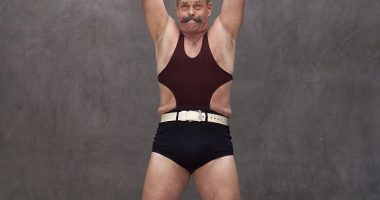“Rowing and biking share significant similarities as cardiovascular exercises, primarily in their capacity to elevate heart rate and improve cardiovascular health,” says Jake Harcoff, CSCS, a certified strength and conditioning specialist and founder of AIM Athletic. In laymen’s terms, they both make you suck serious wind (and sweat buckets).
Experts In This Article
But the similarities don’t end there, Harcoff says. Rowing and cycling both:
- Maximize calorie burn
- Engage large muscle groups, particularly the legs
- Enhance endurance and strength
- Offer low-impact alternatives that minimize strain on joints
So, which one is the better cardio workout? Below, we chatted with experts to weigh the pros and the cons, so you can be the judge.
In This Article
Rowing
Muscles worked
“Rowing is a full-body workout that engages multiple muscle groups simultaneously,” Harcoff says. The primary muscles targeted include:
- Legs (quadriceps, hamstrings, calves)
- Core muscles (abdominals, obliques)
- Back muscles (latissimus dorsi, rhomboids, trapezius)
- Arms (biceps, triceps, deltoids)
Pros
Rowing boasts a boatload (pun intended) of benefits. For starters, it’s low impact. This “reduces stress on joints, making it suitable for people with joint issues or those seeking a gentler workout,” Harcoff says.
Let’s be clear: low impact does not mean easier. Rowing is still a rigorous workout. “It engages the entire body, from legs to arms, providing a workout that maximizes calorie burn,” Harcoff says.
Not only is it a fat burner and a heart pumper, but it also promotes overall strength and endurance. “The coordination required effectively ensures that both upper and lower body muscles are strengthened while also improving cardio,” he says.
Cons
“Despite its benefits, rowing does have some drawbacks,” Harcoff says. “One notable disadvantage is the sport’s specificity.” Meaning, not everyone has the proper equipment. Unlike accessible sports, like running, you can’t just throw on a pair of sneakers and hit the road. This “may limit its appeal to [other] athletes,” Harcoff says.
“Plus, mastering proper rowing technique can be challenging, potentially leading to frustration for beginners,” Harcoff says. It can be easy to make mistakes on rowing machines, and on top of this, bad form can be bad news for your body. “Improper form or overexertion can lead to injury, particularly in the lower back and knees,” he says.
Who should try rowing
Rowing—whether on a rowing machine or in a boat—is good for anyone looking to level up their fitness. “Its full-body nature makes it a versatile option for anyone seeking to improve their cardiovascular fitness and overall strength,” Harcoff says.
Rowing is particularly good for folks with joint issues, because it’s gentler on the joints, making it a great “alternative to higher-impact exercises like running,” Harcoff says.
And of course, if you’re into water sports, rowing is for you. When you’re using a rowing machine, the exercise is “particularly well-suited for individuals looking to enhance their performance on the water, as it closely mimics the movements required for rowing in a boat,” according to Harcoff. And rowing on the water is a great to way to get all the benefits of outdoor workouts.
Who should skip rowing
While rowing is generally safe for most people, certain groups may need to exercise caution or avoid it altogether, according to Harcoff. For example, peeps with pre-existing knee issues or injuries. The repetitive motion of rowing may exacerbate these conditions, potentially causing further discomfort or even re-injury, he says.
Cycling
Muscles worked
Your legs do most of the work when pumping the pedals of a bike. So, as you probably guessed, “biking primarily targets the lower-body muscles, including the quadriceps, hamstrings, glutes, and calves,” Harcoff says.
But that’s not all. “Biking [also] engages the core muscles for stability and balance, particularly when riding on uneven terrain or at higher speeds,” he says.
And while biking is largely a lower-body exercise, your “upper body muscles, including the arms and shoulders, may also be activated to a lesser extent, especially when maintaining proper posture and handling the bike,” Harcoff says.
Pros
“Biking offers numerous advantages,” Harcoff says. Like rowing, “it’s a low-impact exercise, making it gentle on the joints and suitable for individuals of all fitness levels,” he says.
Cycling will also ramp up your heart rate. “It provides an effective cardiovascular workout, helping to improve heart health, lung function, and overall endurance,” Harcoff says.
Unlike rowing, biking is pretty accessible. If you don’t own your own set of wheels, you can usually rent one (relatively) inexpensively, thanks to bike sharing systems like Citi Bike. (And if indoor cycling is your thing, even the sparsest workout spaces usually have a stationary bike.)
But for even bigger benefits, biking outdoors is where it’s at. Not only will fresh air and scenic routes beat the boredom and monotony of your regular workout routine, but being in nature is good for your mental health, too.
Best of all, biking is very versatile. You can pedal to work, for fun, or to get a great sweat sesh, Harcoff says. In other words, it’s easy to incorporate into your day-to-day life. This means you’re more likely to do it (and stick to it).
Cons
“One notable disadvantage of biking is the risk of accidents or injuries, particularly when biking on busy roads or uneven terrain,” Harcoff says.
You can also get hurt if your bike doesn’t fit well. For a smooth ride, you need the correct frame size, saddle height, and seat angle, just to name a few. When these things aren’t right, you’re asking for trouble. “Improper bike fitting can lead to discomfort or pain, especially in the lower back, neck, or wrists,” Harcoff says.
Even when you do have the right fit, biking can be a bit uncomfortable at times. “Long rides may also cause soreness from prolonged sitting and muscle fatigue,” Harcoff says. Proper rest and recovery are essential.
“Biking indoors on stationary bikes may also lack the sensory stimulation and variety of outdoor cycling, potentially leading to boredom or reduced motivation,” Harcoff says.
Who should try cycling
Much like rowing, if you know how to ride a bike, cycling is likely to be a good option for a cardio workout.
“Biking is an ideal exercise for individuals of all ages and fitness levels who are looking to improve their cardiovascular health, endurance, and overall fitness,” Harcoff says. “It’s particularly a good option for those seeking a low-impact alternative to high-impact activities like running or jumping.” Think: people with joint issues or anyone recovering from an injury.
Who should not try cycling
Similar to rowing, biking is generally safe for most people. That said, if you fall into the following groups, cycling may not be for you, Harcoff says:
- People with balance issues or neurological conditions that affect coordination (biking may be too challenging or even potentially unsafe)
- People with severe joint pain or injuries (biking may exacerbate these conditions, particularly if proper bike fit and posture are not optimized for their body)
The bottom line
All the pros and cons have been counted. So, when it comes to rowing vs. cycling, who’s the clear cardio winner? While you can’t go wrong with either (both workouts are top-notch for your ticker and building muscle), it all really depends on what form of exercise is right for you.
First and foremost, look at your current state of health. Certain exercises may not be suitable for your specific situation. Again, if you have balance issues, biking is probably not the best fit for you. Similarly, people with knee injuries should steer clear of rowing.
You should also factor in your fitness level and goals. If you’re an athlete, you might need to be choosier about your cardio activities—and with good reason.
“Tailoring cardio workouts to mimic the demands of [your] chosen sport can optimize [your] training and help [you] achieve goals more effectively,” Harcoff says. “Whether you’re rowing to improve your on-water performance or cycling to complement your running regimen, aligning cardio exercises with your specific fitness objectives can maximize effectiveness.”
“The key to gaining the benefits of cardio lies in finding an activity that you enjoy and can sustain.”—Jake Harcoff, CSCS
At the end of the day, though, it simply comes down to which one you like more. “The key to gaining the benefits of cardio lies in finding an activity that you enjoy and can sustain over longer periods,” Harcoff says. “Whether it’s rowing or cycling, the best form of cardio is the one that keeps you consistent and motivated.”
Source: Well and Good






